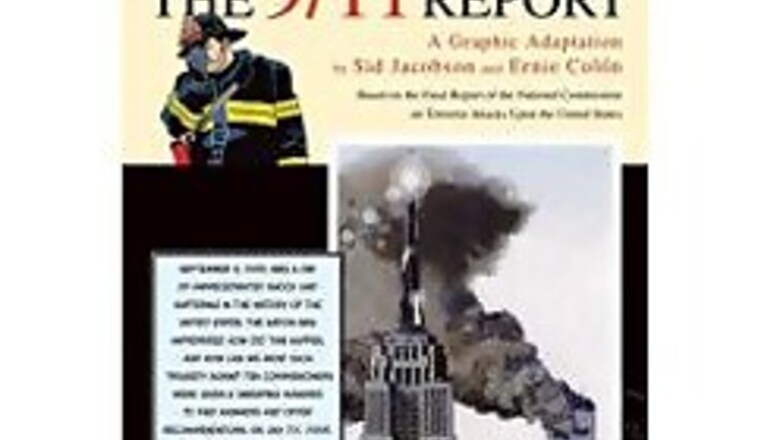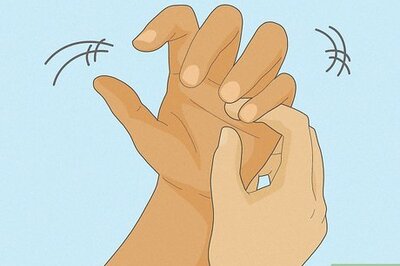
views
Los Angeles: The official report of the 9/11 Commission was the rarest of government documents - a gripping read that became a bestseller and won a national book award.
But who really had the time, energy and concentration levels to burrow through the tome's 568 pages?
Not illustrator Ernie Colon.
The 75-year-old artist, whose resume includes protracted stints at Marvel and Harvey Comics, gave up after just 50 pages.
Then he had the kind of eureka moment that causes light bulbs to flash and exclamation marks to pop open in a bubble above the heads of comic book heroes.
Colon decided to team up with long-time collaborator Sid Jacobson to produce a graphic novel version of the report, which documents intelligence and police failures in the run-up to the Sep 11, 2001, terrorist attacks on New York and Washington.
The result is The 9/11 Report: A Graphic Adaptation - a 130-page offering that looks like a comic book and reads like a comic book - complete with sound effects like "BLAMM" when a plane smashes into the Pentagon and "R-RRUMBLE..." when the massive south tower of the World Trade Centre begins its terrifying collapse.
The book, which costs $17 in paperback and $30 in hardback version, was published in August to coincide with the fifth anniversary of the attacks and debuted on the New York Times bestseller list at number six in the paperback non-fiction category.
Reviews of the book have been mostly favourable. The Chicago Tribune called it "unexpectedly moving", while the Florida Ledger called it riveting and said "everyone should read it".
The Houston Chronicle wrote this week that it "manages at once to be accessible and intelligent, and marks an important publishing experiment".
For authors Colon and Jacobson, both in their mid-70's, the success is reward not only for the time they invested into distilling the often dense report into just 130 pages. It also vindicates the art form at which they have worked their entire careers.
"I think the comic-book format has been wrongly stigmatised," Jacobson told the Los Angeles Times.
"This book shows just what can be done with the graphic medium, and just how successful that medium can be."
This is not the first comic book to tackle a serious subject. New York-based artist Art Spiegelman won a Pulitzer Prize in 1992 for Maus, which tells the story of his father, a Holocaust survivor, by portraying the Nazis as cats and the Jews as mice.
In 2003, Marjane Satrapi described her childhood in Iran during the Islamic revolution in the book Persepolis, a graphic memoir. In 2004, Spiegelman published In the Shadows of No Towers, a graphic diary of the September 11 attacks.
The inventor of the graphic novel, Will Eisner, traced the history of the anti-Semitic forgery The Protocols of the Elders of Zion in his stunning last work, The Plot, which was published last year.
What is different about the new book is its success in reinterpreting the fact-laden report into the graphic art form.
Like the original 9/11 report, the graphic version is less about the actual attacks than about what led up to them and the inept inner workings of government agencies whose oversight and omissions allowed the plot to succeed.
But it also speculates about what happened on the airplanes and takes licence with the sound effects, which some critics complain demean the cataclysmic events.
"The sound effects seemed to have jarred some people, but we accept sound effects as being part of the language of movies," Colon said. "Sound effects are also the language of my craft, and when I draw a building falling, I have to be able to show the sound that makes."
Nevertheless, "it's not a dramatisation", insists Jacobson. "It's the story of an investigation. It's graphic journalism."
The first chapter, We have some planes... is a timeline of events on the hijacked planes that gives readers a brilliant insight into the progression of events.
The book goes on to show the infighting that gripped the government before the attacks and the chaos and courage that followed the plane crashes.
Lee H Hamilton, the co-chair of the bipartisan 9/11 Commission, was initially sceptical of the project but is now one of its strongest supporters. He even wrote a foreword to the comic book.
"It also opens the report up to a whole new audience that doesn't read much any more," Hamilton said.
















Comments
0 comment